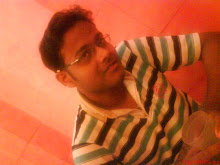This month marks the 25th anniversary of what is now widely acknowledged to be India's first defining steps towards an information and communications revolution. It was in August 1984 that the Centre for Development of Telematics or C-DOT was set up with the specific intention of indigenising digital switching technology to meet India's unique requirements.
At the celebratory level, all those who worked at C-DOT in one capacity or another have come together on the Internet to create a virtual community spread from America to Australia and India to Indonesia. Over a thousand professionals have interacted from all over the world to design a series of events to celebrate their work. This is a generation of young professionals who believed in themselves 25 years ago and focussed on creating something unique from scratch for the nation as opposed to merely copying western products from multinationals.
C-DOT was established as an independent society to help develop a series of digital switching products to meet Indian requirements. Then we had over two million phones for 750 million people. It used to take 15 years to get a telephone connection. In the short span of 25 years India now has close to 500 million phones. We are adding 10 to 15 million phones every month. And a telephone connection can be obtained on your way to buy grocery. C-DOT planted the right seeds for this information and communication technology (ICT) revolution in the country a quarter century ago. The spirit of private enterprise helped it grow to a substantial industry. Now is a good time to review and reflect on what was so unique about the C-DOT endeavour.
To begin with it was a big idea with an opportunity for generational change. It was an idea which could affect people in urban and rural areas in all walks of life and connect the nation in a very modern way. It was crucial that this big idea was articulated in a manner that would convince the political leadership of the day and compel it to commit to realizing that dream. It required political will at the level of then prime minister Rajiv Gandhi with national visibility, unconditional support and egalitarian management approach. It also required unconventional and selfless leadership at the helm of C-DOT with clarity, simplicity and values.
The concept was to build indigenous Indian technology for digital switching system with focus on rural connectivity, accessibility as opposed to telephone density, ancillary industries and young talent with new energy and new work culture, work ethics, work norms and work values. The overall strategy was to design, develop and manufacture products to suit Indian climate conditions, especially for rural exchanges without air conditioning at substantially lower costs and at the same time train human resource in ICT to manage, maintain and develop products for the future.
C-DOT made a public commitment to develop products in 36 months for Rs.36 crore. As a result of openness, transparency and public accountability C-DOT was fortunate to get substantial support from national and local media. Right from day one C-DOT focussed on public-private partnership with a clear understanding that the products designed by C-DOT will be manufactured by public and private companies. It will require support of the unions and new regulations. All of this was not possible without organizational innovation where hierarchies were systematically broken, young people were empowered with autonomy, freedom, and flexibility, to work long hours and give their best. The mood at work was upbeat with a mission to help build information infrastructure for India. Young people were systematically shielded from the day-to-day bureaucratic bottlenecks. It was their energy, self-confidence, hard work and can-do mentality which were the key to delivering various products.
